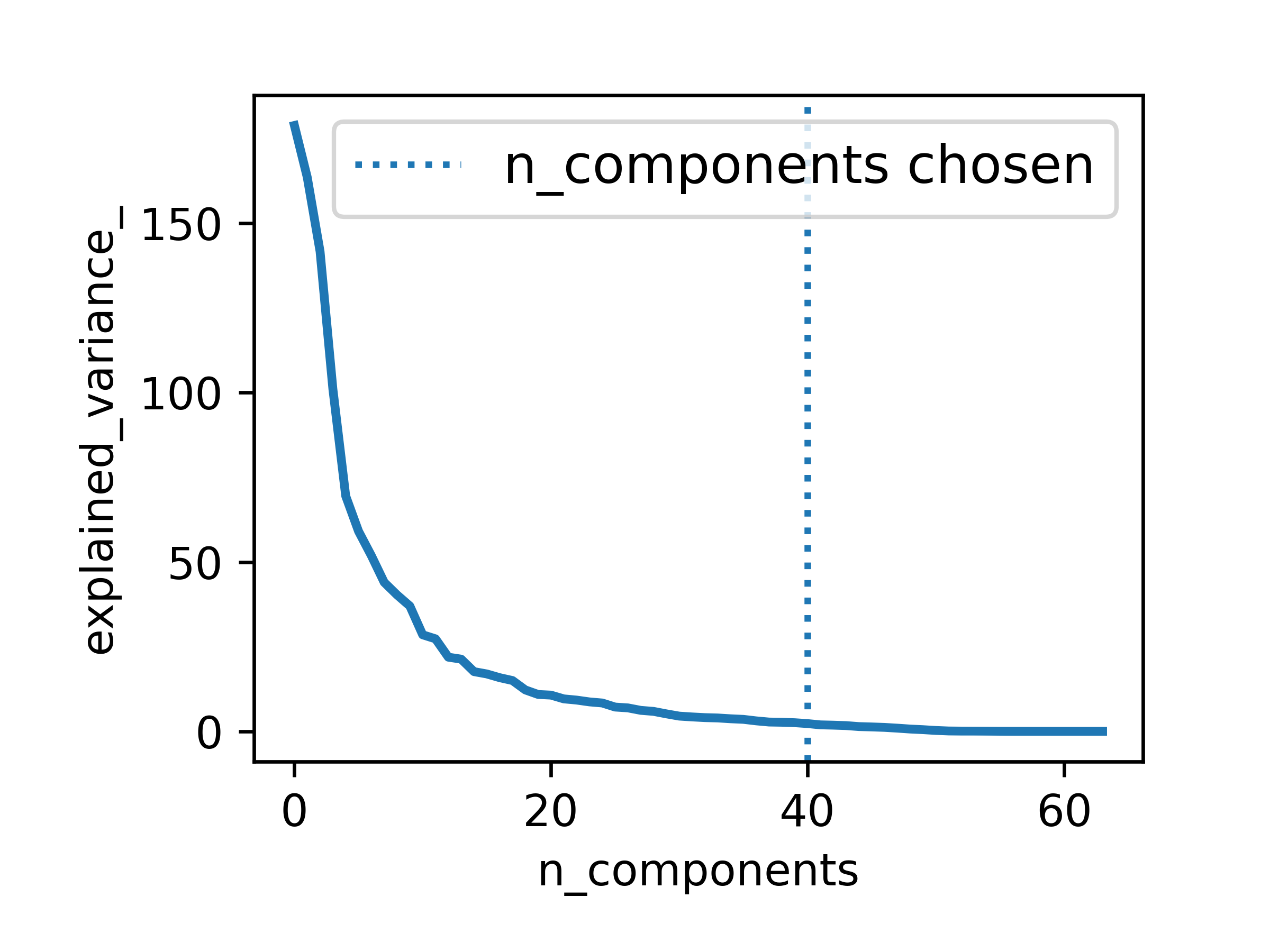【9】例子--1--general--PCA与逻辑回归的搭配
Pipelining: chaining a PCA and a logistic regression PCA降维, logistic regression来作预测
一、图:

二、代码:
#!/usr/bin/python
# -*- coding: utf-8 -*-
"""
=========================================================
Pipelining: chaining a PCA and a logistic regression
=========================================================
The PCA does an unsupervised dimensionality reduction, while the logistic
regression does the prediction.
We use a GridSearchCV to set the dimensionality of the PCA
"""
print(__doc__)
# Code source: Gaël Varoquaux
# Modified for documentation by Jaques Grobler
# License: BSD 3 clause
import numpy as np
import matplotlib.pyplot as plt
from sklearn import linear_model, decomposition, datasets
from sklearn.pipeline import Pipeline
from sklearn.model_selection import GridSearchCV
logistic = linear_model.LogisticRegression()
pca = decomposition.PCA()
pipe = Pipeline(steps=[('pca', pca), ('logistic', logistic)])
digits = datasets.load_digits()
X_digits = digits.data
y_digits = digits.target
###############################################################################
# Plot the PCA spectrum
pca.fit(X_digits)
plt.figure(1, figsize=(4, 3))
plt.clf()
plt.axes([.2, .2, .7, .7])
plt.plot(pca.explained_variance_, linewidth=2)
plt.axis('tight')
plt.xlabel('n_components')
plt.ylabel('explained_variance_')
###############################################################################
# Prediction
n_components = [20, 40, 64]
Cs = np.logspace(-4, 4, 3)
#Parameters of pipelines can be set using ‘__’ separated parameter names:
estimator = GridSearchCV(pipe,
dict(pca__n_components=n_components,
logistic__C=Cs))
estimator.fit(X_digits, y_digits)
plt.axvline(estimator.best_estimator_.named_steps['pca'].n_components,
linestyle=':', label='n_components chosen')
plt.legend(prop=dict(size=12))
plt.savefig('chaining_PCA_and_logistic_regression',dpi=600)
plt.show()
三、撸代码:
1.digits = datasets.load_digits()
这个是手写数字数据集,包括1797个0-9的手写数字数据,每个数字由8*8 大小的矩阵构成,矩阵中值的范围是0-16,代表颜色的深度。
2.plt.clf()
清空当前的图片。我本来是要作图的,这个清空是几个意思呀?
Clear the current figure.
3.plt.axes([.2, .2, .7, .7])
在MATLAB中,axes是创建坐标轴对象,axis是修改坐标轴范围 axes(‘position’,[0.1 0.2 0.3 0.4]); % 创建一个坐标系。 %让起点是左边占到显示窗口的十分之一处,下边占到十分之二处。 %,宽占十分之三,高占十分之四。一个小框就出来了。
4.np.logspace(-4,4,3)
1.00000000e-04 1.00000000e+00 1.00000000e+04] 个数为3,起始e-4,终止为e4的等比数列
5.axvline
matplotlib.pyplot.axvline(x=0, ymin=0, ymax=1, hold=None, **kwargs) 在图中话一条竖直(vertical)的线
6.PCAH和逻辑回归算法略
参考资料:
这里是一个广告位,,感兴趣的都可以发邮件聊聊:tiehan@sina.cn
![]() 个人公众号,比较懒,很少更新,可以在上面提问题,如果回复不及时,可发邮件给我: tiehan@sina.cn
个人公众号,比较懒,很少更新,可以在上面提问题,如果回复不及时,可发邮件给我: tiehan@sina.cn

